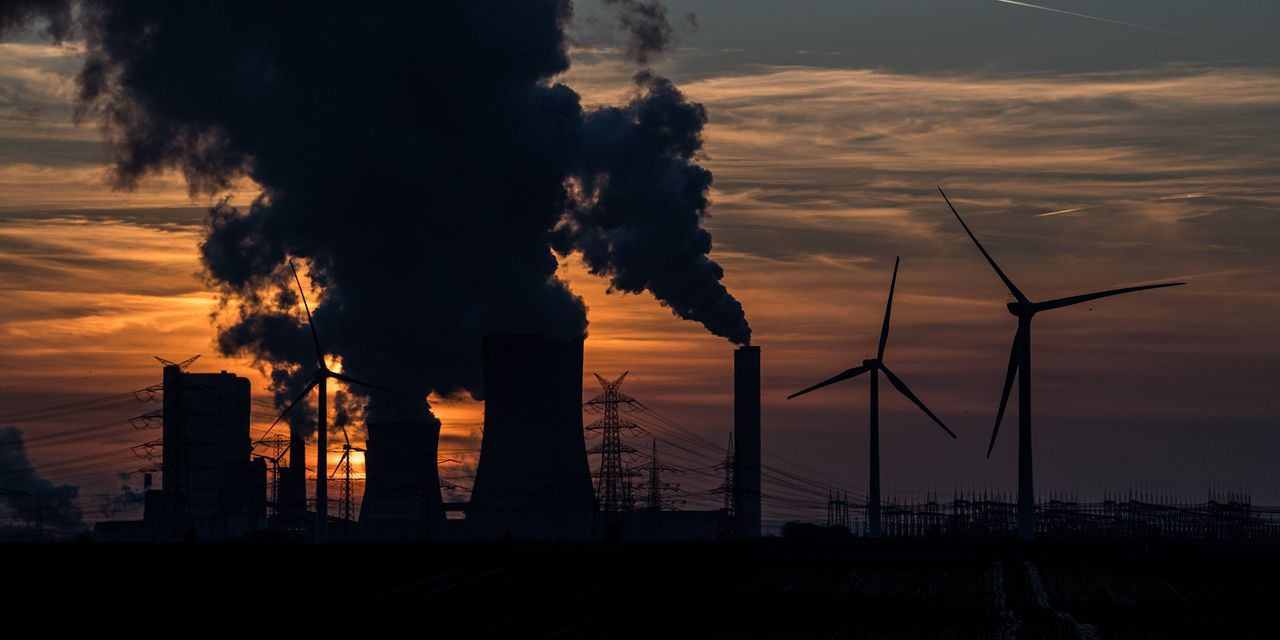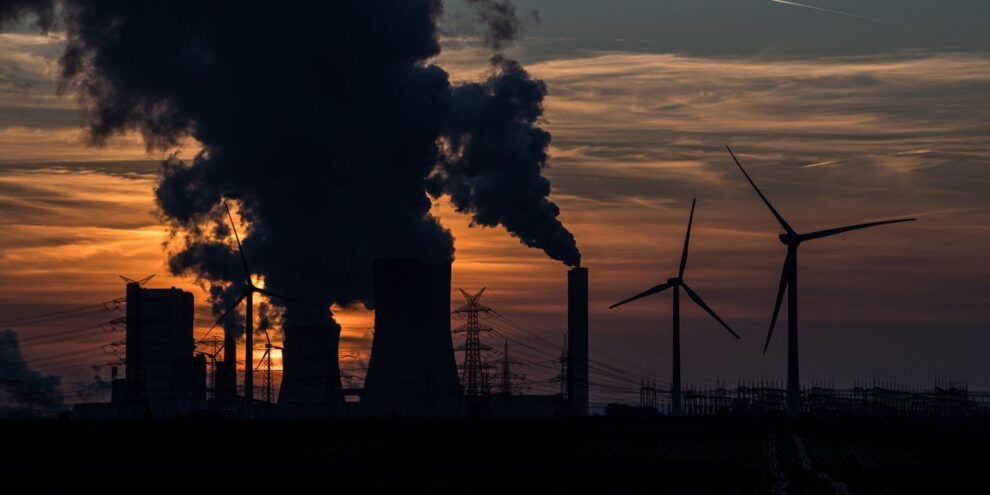
For some investment advisers and stock-pickers, so-called green investing is far from just a feel-good move.
There are population demographics, a private-public mandate to meet international greenhouse gas emissions goals and infrastructure spending that shape a longer-term bullish picture. And a mix of new technology for highly-regulated, decades-old industries will shape climate-minded investing for many years to come, particularly as the U.S. transitions away from oil and gas USO, -2.32%.
Don’t miss: Biden’s climate envoy Kerry gives natural gas a 10-year expiration date
One such investment adviser is Daniel Milan of Cornerstone Financial Services in Southfield, Mich.
Milan’s approach includes a range of related themes that target clean water, wind power and a long-awaited upgrade of the nation’s electrical power grid, including with smart meters and other advancements. These sectors and stocks can be accessed by retail investors most directly via exchange-traded funds (ETF). Plus, he thinks investors who want a smaller taste of green investing and have a longer horizon might find their best chance with a comprehensive clean-energy ETF.
“From a thematic standpoint, we’ve been pretty heavy on smart grid and water funds,” said Milan, who said he’s been bullish, with regular repositioning, on water for 3 1/2 years, and with smart-grid technology for 2 1/2 years, and counting.
“I consider these an alpha booster within our models,” he added.
Water is a short- and long-term play
One fund in focus is the First Trust Water ETF FIW, -2.58%. The fund holds 36 of the largest U.S.-listed water companies, ranked by market cap and weighted equally within five tiers. Companies of any market capitalization that derive revenue from the potable and wastewater industry are selected. In addition, its tiered equal-weighting scheme boosts the weight of small- and micro-cap companies, hence, reducing concentration, Milan says.
“Our water thesis is short-term, intermediate-term and long-term,” he says. “Population growth means the need for reinvestment in infrastructure.”
In the U.S. alone, fixing the water infrastructure — including ridding groundwater of what are usually known as “forever chemicals” — featured only behind transportation as the largest recipients of funding in last year’s $1.2 trillion infrastructure law. The bipartisan effort included $550 billion in total new spending, of which more than $55 billion is committed for the modernization of water infrastructure.
“I’m from Michigan. Flint lived its water crisis and we all lived it to some extent,” Milan said. “I don’t think that crisis water scenario is unique.”
Much of the nation’s water infrastructure was built decades ago, sometimes more than a century earlier. Leaking water has become an issue, with some water systems reporting loss rates exceeding 60%, a McKinsey & Co. report on the sector says. The infrastructure act passed last year provides funding to replace lead pipes throughout the country, address emerging contaminants, especially in small and disadvantaged communities, and the spending will support rural water projects.
“Hedge funds and institutional investors are going about this theme by buying land and getting water rights; retail investors can’t do that. But they can consider an ETF,” Milan says.
Smart-grid upgrades — chicken or egg first?
“The power grid conversion is going to happen, but of course all investors want to know how long is that going to take,” Milan says. The cost of wind and solar have come down, making natural gas no longer the only viable option to supply the energy to the grid. Interest in hydrogen and renewed interest in nuclear may also follow.
Milan and others question the added strain on the power grid from electric vehicles and more conversions to electric heat pumps for homes. But that demand may also compel a quicker grid update.
“It’s a bit chicken or egg first,” Milan said.
“But there is incentive to stay with it,” he said. “Capex invested from private and public sources will continue. Maybe not at the speed people want, but for a long-term thesis, we want to ride that even if slowly building.”
First Trust NASDAQ Clean Edge Smart Grid Infrastructure Index Fund GRID, -2.05% is a concentrated fund targeting global equities determined to be in the smart grid and electrical energy infrastructure sector, Milan says.
The fund includes companies, such as utilities, that are either pure play — more than 50% revenues from the grid. It also folds in diversified names — less than 50% of revenues are derived from the smart grid and electrical energy infrastructure sector. There’s a collective weight of 80% for pure play and 20% for diversified.
The sector may include business in electric grid, electric meters and devices, networks, energy storage and management, and enabling software. GRID also screens for minimum liquidity and market cap.
A cautious fan of FAN
Milan and other stock-pickers have their eye on calls for flat turbine installation growth, limited in part by inflation hitting components. Although the U.S. push into offshore wind is seen as a positive factor overall.
Most wind ETFs are too small to pass Milan’s sniff test.
The best, meaning larger, option may be First Trust Global Wind Energy ETF FAN, -1.32%. It saves roughly 60% of its weighting for pure plays in the wind industry, including turbine manufacturers and operators, and allocates the remaining 40% to diversified sector, says Milan.
This mix might frustrate some investors who envision a pure play. In fact, they may find more desirable wind opportunities in a broader clean-energy ETF.
What’s your definition of clean energy?
The First Trust NASDAQ Clean Energy Sector ETF QCLN, -2.08% holds a broad portfolio of U.S.-listed firms in the clean energy industry. Eligible companies must be manufacturers, developers, distributors or installers of one of the following sub-sectors: advanced materials (that enable clean-energy or reduce the need for petroleum products), energy intelligence (smart grid), energy storage and conversion (hybrid batteries) or renewable electricity generation (solar, wind, geothermal, etc.).
Because there is subjectivity in classifying companies as “clean energy,” potential investors would be well-served by reviewing the fund’s portfolio to make sure their definition of “clean energy” matches QCLN’s, says Milan.
As for other factors, solar is targeted for spending in the Biden administration’s stalled Build Back Better bill, which has met with resistance as part of a larger budget bill in a narrowly divided Congress. But administration officials have said the president is working behind-the-scenes to potentially strip out some of the more popular climate-focused portions for their own test in Congress.
What’s more, Biden extended Trump-era tariffs on imported solar equipment by four years, a nod to U.S. solar manufacturers. But in a gesture for domestic solar installers, he eased the terms to exclude a panel technology increasingly used in big U.S. projects.
Milan acknowledges recent volatility in this ETF and other macro-level sector funds as broader market consensus has favored names with high cash flow and strong balance sheets over high-growth companies.
Don’t miss: Not enough babies? EV battery shortage? Dwindling water? There are ‘scarcity’ stock plays for all of it








